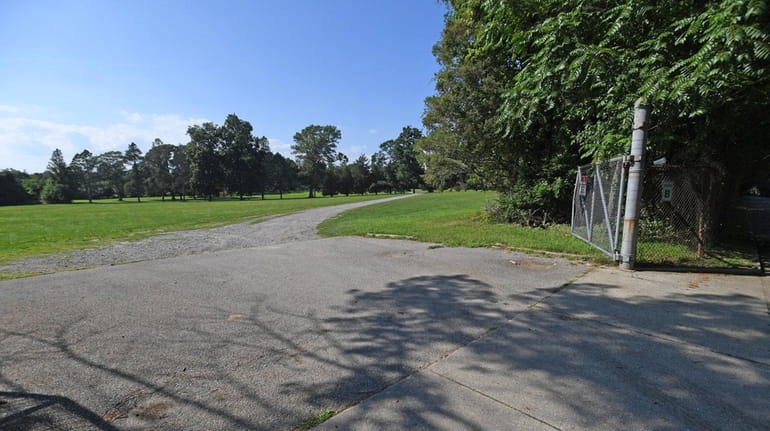Gyrodyne development would increase traffic, study finds

Gyrodyne, a former helicopter manufacturer now operating as a real estate investment trust, envisions a 150-room hotel with conference facilities, 220 assisted living units and 130,000 square feet of medical offices on a 75-acre property near the Smithtown-Brookhaven border. Credit: Newsday / Thomas A. Ferrara
Proposed development of the Gyrodyne property near the Smithtown-Brookhaven border would mean hundreds more cars on area roads every day, but traffic engineering improvements would speed some drivers through intersections that are now clogged, according to a study commissioned by the developer.
The study by Woodbury-based Cameron Engineering also predicts traffic will increase over the next few years even without development of the property.
Gyrodyne, a former helicopter manufacturer now operating as a real estate investment trust, has not submitted formal plans for development of the 75-acre parcel, a rough trapezoid formed by Route 25A, Stony Brook Road, Long Island Rail Road tracks and Mills Pond Road. But in its subdivision application to Smithtown and in the traffic study, the company envisioned a 150-room hotel with conference facilities, 220 assisted living units and 130,000 square feet of medical offices.
The study estimates those uses would generate 329 vehicle trips per hour during peak morning drive times and 497 trips per hour in peak afternoon times. The study estimates 291 trips per hour during peak hours on Saturday.
Much of that traffic would be on Route 25A, a state road that already carries about 17,300 vehicles a day on the portion between Moriches Road and Stony Brook Road. Hundreds more vehicles would go through Route 25A’s intersections with Mills Pond Road and Stony Brook Road — the intersections closest to the Gyrodyne property that already handle thousands of vehicles per day.
Development at the site would increase traffic at the nearby Mills Pond Road-Route 25A intersection in morning peak hours to 2,294 vehicles and in afternoon peak to 2,646 vehicles, the study forecast. Traffic at the Stony Brook Road-Route 25A intersection would increase to 2,324 vehicles in the morning and to 2,572 vehicles in the afternoon. Saturday traffic at the intersection would increase to 1,891 vehicles, the study concluded.
A woman who answered the phone at Cameron’s office referred a request for comment about traffic issues to Gyrodyne vice president Peter Pitsiokos. He did not respond to a request for comment.
“As someone who drives 25A almost every day past that property, I know that the road system there cannot handle several hundred car trips a day in addition,” Suffolk County Legis. Kara Hahn (D-Setauket) said in an interview. “From a safety and quality of life perspective, it’s a real problem.” Hahn, who is pushing a proposal for Suffolk County to buy and preserve a portion of the Gyrodyne property as green space, said she had not yet reviewed the traffic study.
Douglas Dahlgard, mayor of nearby Head of the Harbor Village, wrote in a letter to the Smithtown Planning Board in November that village officials worried “development will increase the volume of car and truck traffic on 25A so as to require new traffic lights and possibly roadside tree removal and widening.”
Without further engineering, increased traffic as a result of Gyrodyne development would lead to minutes-long delays at some intersections, the study found. Installing traffic signals or roundabouts, or modifying signal timing would lead to much better outcomes in some cases, but not all. For instance, a signal proposed for the Mills Pond Road-Route 25A intersection would introduce delays of more than a minute for some Route 25A drivers used to rolling through the intersection, but significantly cut delays for others who must wait to make turns, the study determined.
At the Stony Brook Road-Route 25A intersection, installation of a traffic signal or construction of a roundabout could push some drivers through with fewer delays than they experience now, even with increased traffic volume. Drivers who now wait almost two minutes in afternoon rush hour to make a left turn from Stony Brook Road to Route 25A could make the turn with just a 19-second delay if a traffic circle were built there, the study found.
